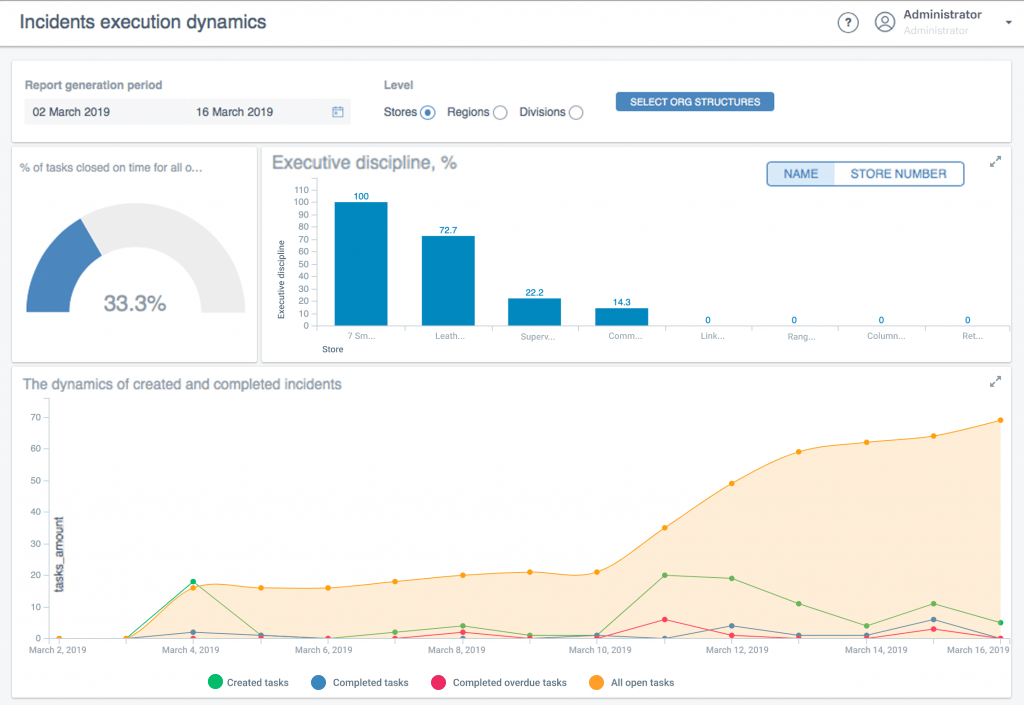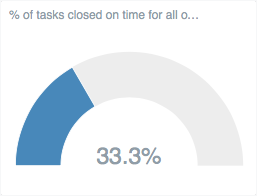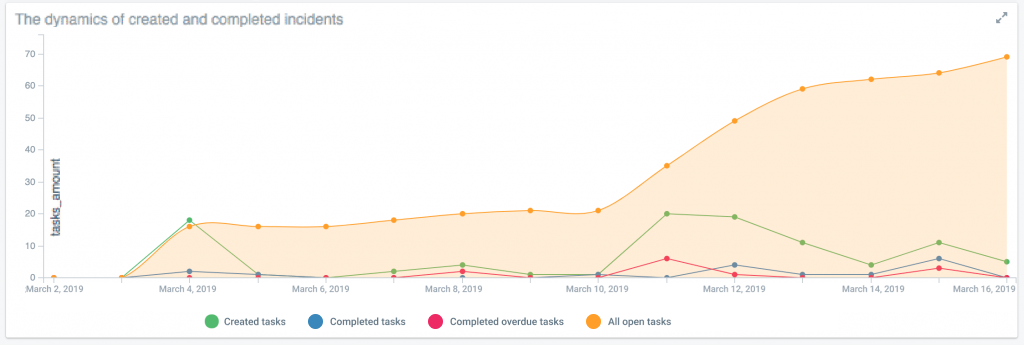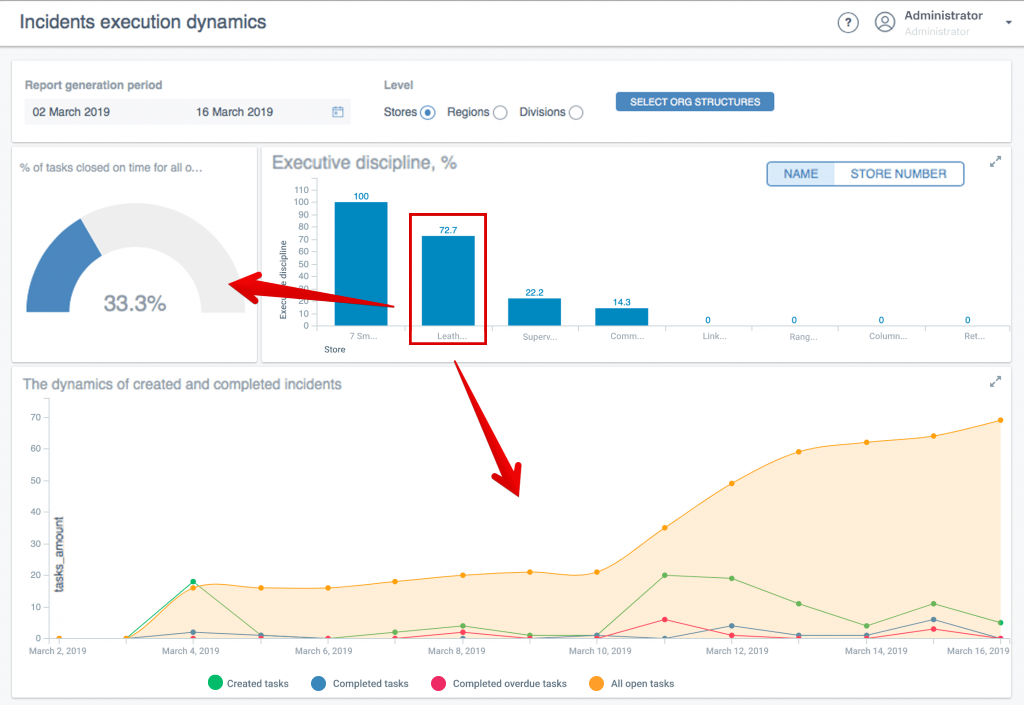Qvalon Blog article content
We are confident that every sales manager has his own answer to this question. The simplest one is: come to the store and see for yourself. This is a really good way to get great results, but not always possible. After all, if your network has a wide geography, it becomes difficult and costly to systematically visit each retail facility for the purpose of control in terms of travel budget.
QVALON has developed an effective tool for remote management-one that gets you reliable information from all of the sales outlets in your network. Using QVALON, you can see the status and quality of execution of delegated tasks, as well as saving significantly on travel expenses. To do this, you just need to look at the report "Dynamics of task execution based on test results".
What is executive discipline?
This is an indicator of the timely completion of the tasks set for the employee based on the audit results. For example, the auditor came to the store, checked the checklist, set 5 tasks for the store manager, and set a deadline for their completion. Two of the tasks were completed by the manager, and three of the tasks were postponed until they became "overdue". After that, the store manager returned to the "overdue" tasks and completed them.
This information is the basis for executive discipline. The report for this example looks like this in the system:

The data is displayed for a certain period, which you can set with filters. Executive discipline can be assessed at different levels:
- store;
- region;
- division.
What can you learn about employee performance
The report contains 3 charts reflecting different information.
Percentage of tasks closed on time

Looking at this chart, you can immediately assess the performance of your network. You can see the percentage of tasks closed on time from the total number of tasks set for the specified period. If only 33.3% of the tasks are being completed on time, it’s a good time to consider how well your network’s system control tool works. What happens to the rest of the tasks at the and why are they not getting completed on time? With this tool, you can answer those questions.
Note that this report only shows the tasks set in the checklist audits. "Photoreport" and "general" tasks are not taken into account in the report.
Rating of retail facilities

The second chart reflects the rating of retail facilities, regions, divisions within the framework of executive discipline (facilities, regional structures are arranged in order from "leaders to outsiders"). This information will be useful if it is time to reflect on the competencies and performance of your managers, draw conclusions and make timely management decisions.
Working out (statuses) of tasks dynamics

The third block contains charts detailing information about changes in the statuses of tasks, as well as the number of changes and tasks completed/in progress/outstanding. The chart shows:
- open tasks (new and ongoing) — orange line;
- new tasks (based on the results of the most recent audit or previously set tasks, which the contractor has not yet started, not accepted, and the deadline for them has not yet passed) — green line;
- tasks closed on time — blue line;
- tasks closed at the end of the term (overdue) — red line.
Details
If necessary, you can get detailed information on the executive discipline of the individual facility. To do this, just select the facility on the rating chart. After that, the diagram with the percentage of closed tasks and the dynamics chart will be automatically recalculated.

If there are a lot of stores and it is inconvenient to search for them on the rating diagram, you can use the "Choose organizational units" button. A window with a list of tasks will open, where you can choose only the facilities you are interested in.
How is QVALON’s executive discipline control tool more effective than other tools?
At the outset, we said that each manager had his or her own way of monitoring performance. The most common, in our opinion, is the various task manager systems. Of course, there are some very convenient and effective ones out there, but QVALON has one undeniable advantage — the ability to track performance over time.
For example, if at the beginning of the period many new tasks were set and all of them were closed in one day, you might want to take a closer look at the store manager. Maybe he or she is careless or sloppy in completing the tasks. On the other hand, if you have a store manager who had a lot of overdue tasks at the beginning of the period, and then the schedule was smoothly aligned at the end of the period, that indicates positive changes in that manager’s work flow.
Use QVALON — manage your company efficiently!



